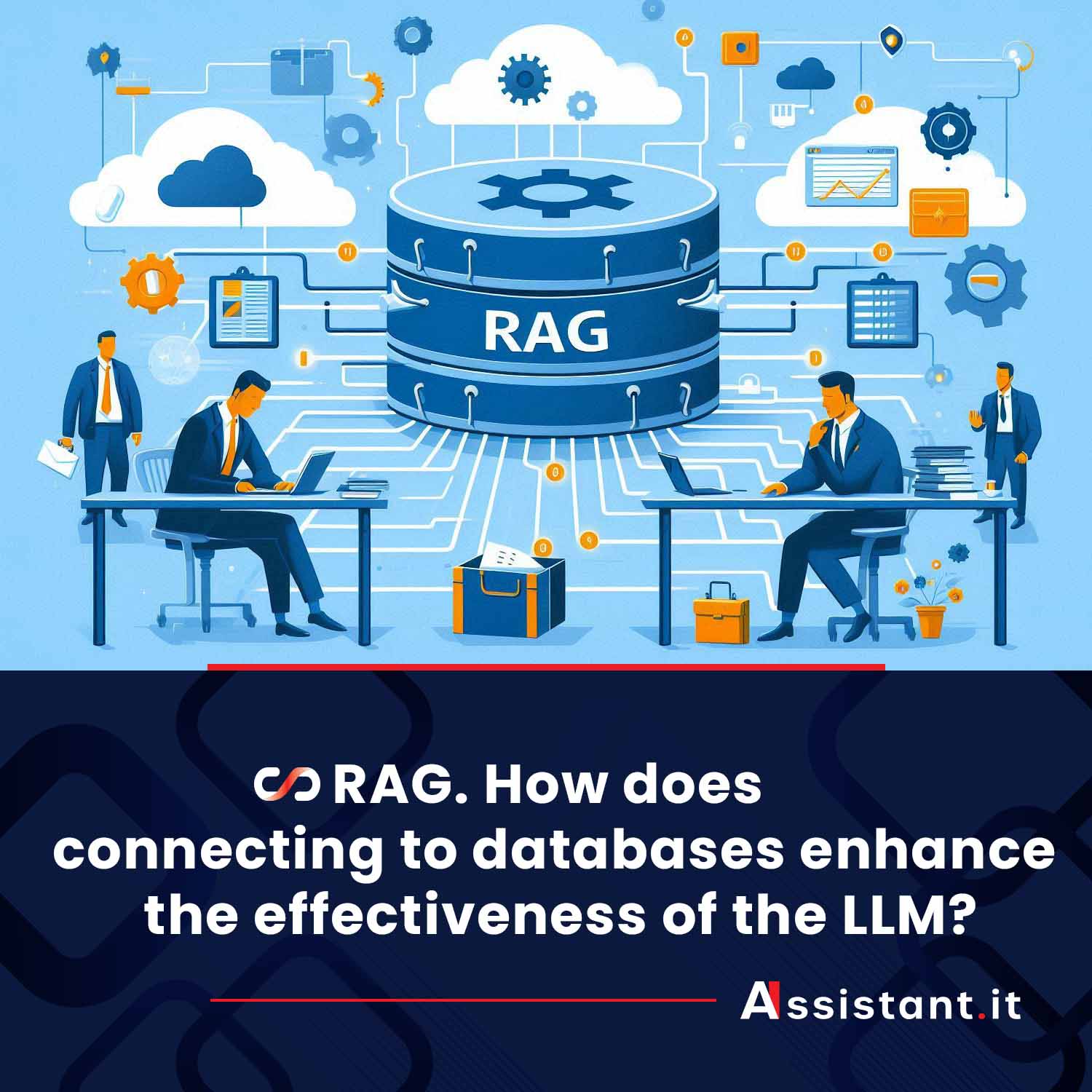Language models, such as large language models (LLMs), have revolutionized how we process and generate text. However, their potential can be significantly increased by integrating them with databases, leading to an approach known as Retrieval-Augmented Generation (RAG). This raises the question: how does combining LLMs with databases affect their efficiency, and what are the benefits of this solution?
What is RAG, and How Does it Work?
Retrieval-Augmented Generation is a method that combines the capabilities of large language models with external resources, such as databases or document collections. In this approach, the model not only generates responses based on its embedded knowledge but also retrieves relevant information from external sources, enhancing the accuracy and relevance of the generated content.
RAG first identifies and retrieves pertinent text fragments or data from a database based on the user’s query. The LLM then processes this information and uses it to create personalized and context-rich responses.
One of the main limitations of traditional LLMs is that they are restricted to the information they were trained on. RAG addresses this issue by allowing the model to access up-to-date information from external databases. This enables systems to provide answers based on the latest data, which is critical in dynamic fields such as finance, law, or medicine. Furthermore, while LLMs excel at generating general responses, they can struggle to deliver specific details or precise data. RAG enhances response precision by enabling the system to search for exact information from relevant sources, such as legal documents, company records, or medical databases.
Benefits of Connecting to Databases
- Access to Current Information
Integrating with databases allows LLMs to utilize the most recent and up-to-date information, which is especially crucial in rapidly evolving domains such as law or technology. Additionally, LLMs can access detailed contexts and data, enabling the generation of more precise and relevant responses. - Reducing Hallucinations
One challenge with LLMs is their tendency to “hallucinate,” generating answers that may seem plausible but are incorrect. RAG mitigates this risk by reinforcing responses with factual information from databases, ensuring greater accuracy and reliability. - Personalization
RAG enables tailored responses depending on the data retrieved for a specific user or context. For instance, in queries about a specific product, company, or interaction history, the system can deliver responses tailored to individual customer needs or situations, which is crucial in industries like customer service.
Practical Applications
In practice, RAG can be used for:
- Customer Queries: Generating responses based on available databases, enabling quicker and more accurate answers.
- Specialized Fields: Retrieving analytical data or research results in areas like medicine or finance to support decision-making processes.
Challenges of RAG Integration
The effectiveness of RAG largely depends on the quality of data accessible to the model. Outdated or erroneous data can lead to incorrect responses. Additionally, connecting LLMs with databases requires advanced infrastructure and technology, which can be challenging for many organizations.
Scalability and Flexibility
One advantage of RAG systems is their scalability and flexibility. They can be adapted to diverse business needs. Enterprises can integrate various databases, both internal and external, to obtain more comprehensive and detailed responses. This could include anything from historical data to current product or regulatory information.
The Future of RAG
As technology progresses, RAG has significant potential to become a standard in many AI-powered applications, improving the quality of interactions and processes. The ability to integrate with different types of databases (e.g., knowledge bases, structured data) opens new perspectives for applying LLMs across various industries.
By combining large language models with databases, the RAG approach significantly boosts the efficiency of generated responses, improving their accuracy and relevance. RAG represents a step forward toward more intelligent and contextual interactions with users, offering a wide range of applications that can benefit both businesses and their customers.
Discover how the AIssistant.it system can accelerate daily tasks and processes in your company with the help of AI tools: https://aissistant.it/contact/
Graphics by: Microsoft Designer AI


